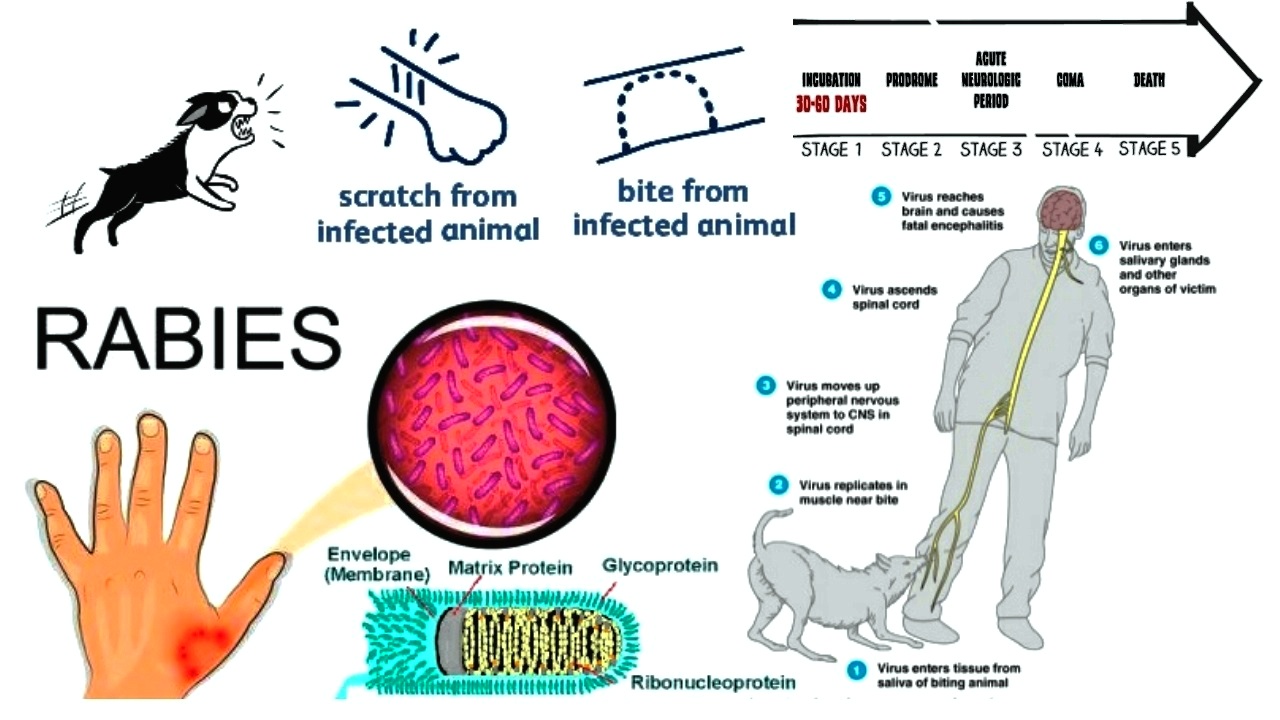Rabies – Incubation Period, Symptoms, and Causes

Most people have no idea that they are at risk for rabies, but exposure can occur at any time. The first symptoms are tingling and pain in the bitten limb. In about 20% of cases, a coma and widespread paralysis result. The incubation period is one to three months, though it can be much longer. While it is important to note that a bite from an animal that can spread the disease is fatal, it is not the only one.
The incubation period for rabies is two to eight weeks. However, it may be shorter in children and in those who have recently been exposed to high levels of rabies virus. The length of the incubation period depends on the type of animal that infected the person, as well as the size and location of the bite. During the incubation period, a rash may appear. It can also affect the central nervous system, causing agitation and anorexia.
Symptoms of rabies are often nonspecific. Some signs indicate damage to the respiratory, gastrointestinal and central nervous systems. Abdominal pain, anorexia and dysphagia may be present in any form. Some people also experience fear and anxiety. Other signs include loss of appetite, fever, or a feeling of numbness. This disease can cause death within a few hours.
Rabies is not common in humans. From 1960 to 2018, there were only 125 cases in the United States. Thirty-four cases involved dog bites during international travel, and 62 involved bats. During a recent outbreak in Illinois, a man refused medical care and died from the disease after waking up in the morning with a bat around his neck. In the following days he died of illness.
Rabies can be caused by the virus that causes shingles. Symptoms of rabies are nonspecific. These animals may experience damage to the respiratory system and central nervous system. Some may experience anorexia or dysphagia. Some may even show behavioral signs of rabies. In severe cases, a person may even develop encephalitis, a type of brain disease. The patient should seek medical attention if the animal exhibits these symptoms.
Although rabies symptoms are usually nonspecific, they may involve other organs. These include fever and anorexia, as well as a number of other complications. Rabies infection is usually asymptomatic, but can result in a rash that may be red or irritated. Patients should consult a doctor and visit a health website produkkesehatanindo.com to determine which organs are affected and what course of treatment is best.
Once the animal has been infected, the RNA is translated into viral proteins. This occurs on free ribosomes in the cytoplasm, where it is then replicated in muscle tissue. In humans, rabies virus enters directly through the peripheral nervous system. It may also travel through the bloodstream and migrate to the brain. It also replicates in muscle tissue and eventually spreads through centrifugally to many organs.
The rabies virus is a highly infectious disease. The disease is highly contagious, and the risk of developing rabies is minimal. If you have been bitten by a rat or dog, you should get to the hospital right away to be treated. Vaccinated animals can control rabies. The virus spreads via saliva and a person's antibodies to rabies may not be positive until late in the disease.
Once the rabies virus has been injected, the virus reproduces similar to other negative stranded RNA viruses. It attaches to the host cell membrane with a G protein and then penetrates the cytoplasm by pinocytosis. Once it reaches the cytoplasm, it uncoils and begins primary transcription of five monocistronic messenger RNAs. Each RNA is translated into individual viral proteins. Replication of genomic RNA is then followed by the synthesis of full-length positive-stranded RNA that serves as a template for progeny rabies.
Infected dogs exhibit a short, excitation phase. This is characterized by restlessness and nervousness. After this, the disease progresses to a paralysis phase. Once the virus is in the body, the dog is unable to bite or even move. Its death is usually accompanied by a high fever. Fortunately, rabies can be prevented by vaccination. It is also easy to avoid a rabies vaccine.

